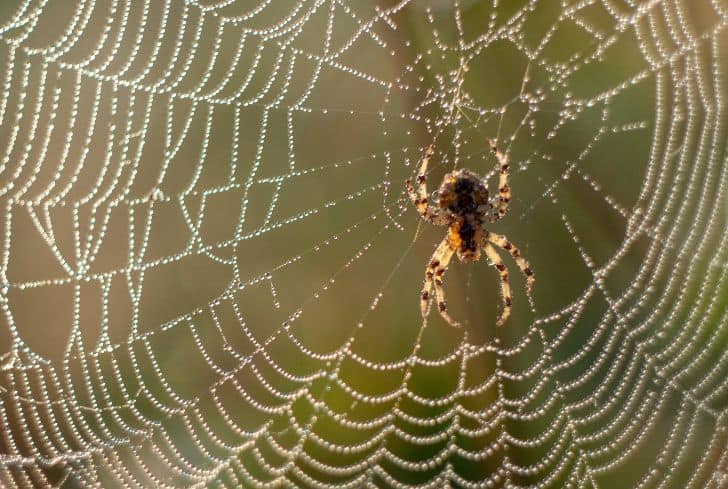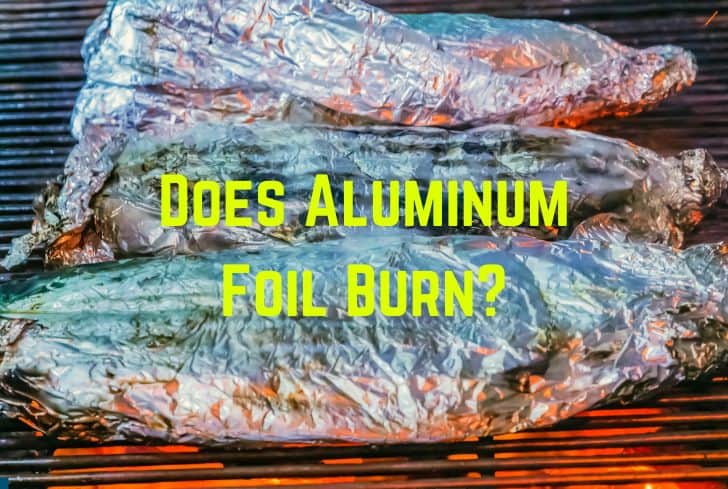Are Spider Webs Flammable? (Yes. Sort of)

While spiders help us get rid of insects, the presence of their cobwebs at home is not a great sight. Spiders create these webs by using the protein in their bodies and use them to trap insects to eat. These webs can sometimes appear in locations that are difficult to clean, such as corners of a ceiling or behind furniture.
Have you ever wondered if spider webs are flammable? In this article, we are going to discuss just that. We will begin by looking at how spider webs are made. Then we will talk about whether these webs pose a fire hazard. Finally, we will discuss how to get rid of spider webs.
Are Cobwebs Flammable?
Yes, cobwebs are flammable. They are made up of spider silk which has no resistance to fire. However, the webs will only melt or smoulder, without sustaining a big flame. If there is an excessive amount of spider web, then it will burn better. But, in general, cobwebs do not really pose a fire hazard.
A few cobwebs here and there are not really dangerous in terms of fire safety. But, if there is an abundance of cobwebs, say when you are dealing with a large house that has been abandoned for a long time, then things could be riskier.
A little flame of 10-20 degrees above room temperature can cause spider webs to quickly disappear. In any case, it is not safe to try to get rid of cobwebs by putting them on fire. Keep reading to find out how to get rid of spiderwebs safely.
What are Spider Webs Made of?
Spider webs are made up of proteinaceous spider silk released from spinnerets (silk-spinning organs), and spiders use them to catch their prey. Just like humans use keratin to grow hair and nails, spiders use protein to create webs through their silk glands.
Spinnerets do not simply have a single opening producing a single thread; instead, they are made up of multiple microscopic spigots, each creating one filament. This gives the right orientation to protein molecules, which provide strength to the silk.
The spigots can be singular or multiple, and they allow spiders to combine filaments in different ways to produce different kinds of silk for various purposes. Spiders use the silk released from these spinnerets to create webs, transfer sperm, and trap insects by wrapping them.
Spiders also use silk to make egg cases, to utilize static electricity in the air, and finally, to fly. The flying technique is very interesting, and it is known as ballooning. Basically, spiders release one of their threads and then fly along with the air current.
What Happens If I Burn a Spider?
It is inhumane to unnecessarily harm a spider with fire. When you burn a spider with an exoskeleton, the pressure inside its body increases, and it ultimately explodes. This is a messy way of trying to get rid of a spider, and more importantly, it can cause a serious fire accident.
Fire, in general, is not a great way of pest control. “Kill It With Fire” is a common phrase, but in reality, it is a terrible idea that puts your house in great danger. Check out this article on Wired to read about some of the accidents that have happened because of using fire for pest control.
Using water is also not a great way of getting rid of a spider because the creature can take hours to drown. Keep reading to find out how to get rid of spiders easily.
Are Fake Spider Webs Flammable?
Yes, fake spider webs are quite flammable. These are often used to decorate houses during Halloween but are actually dangerous. Moreover, fake spider webs are usually placed near the doorways, which can lead to the exit being blocked in case of a fire.
As Federal Emergency Management Agency (FEMA) reports, thousands of fire accidents are recorded every year during the three-day period around Halloween. This is why people are advised to use electric (battery-operated) candles, especially near carved pumpkins and windowsills, to reduce the risk of fires.
But if one is using real candles and fires, these should always be placed away from fake spider webs as they can easily burn and spread the fire.
Are Spider Webs Flammable and a Fire Hazard?
Yes, spider webs do burn. They are made up of spider silk that is not fire-resistant. But they generally do not light up into a flame; instead, they simply melt, almost disappearing when you bring a flame to them. Despite that, it is not recommended to use this method to get rid of spider webs.
Spider webs can be quite irritating, and they ruin the look of the house. But given their flammability, do they also pose a fire hazard?
Not really. You would usually see spider webs in small amounts, stuck here and there in your house, say at the corner of your rooftop or behind a table. These are not enough to ignite a flame. An abandoned house with lots of cobwebs could pose more risk.
However, despite the fact the cobwebs melt unnoticeably, it is not safe to try to use fire to get rid of them. While doing so, you might end up setting the surrounding things on fire.
Using fire as pest control is never a good idea, which is why you should use other methods (discussed below) to get rid of spiders.

Do Spider Webs Conduct Electricity?
Yes. While it sounds rather unbelievable, spider webs do indeed conduct electricity. Their web threads are made up of silk with added droplets of water and a special chemical mix that works as an adhesive and water-attractant glue. This combination charges the web electrically and helps spiders catch their prey.
In a study conducted by Naturwissenschaften, it was revealed that spiders’ webs are electrically charged. It is the first study to show and explain this mechanism. Through the combination of silk, droplets of water, and a special chemical mix, spiders are able to create a unique sticky trap.
This trap also acts as a “water magnet”, which sucks the humidity from the surrounding area. Within a few millimetres, these webs cause little distortions in the electric field of Earth. Because of this, the web literally springs towards its prey and other charged particles like pollens.
This discovery is quite ground-breaking because, as the researchers point out, it can be used for us to develop pollution monitoring devices. Just as spider webs trap surrounding particles, we might be able to create devices that detect and capture airborne pollutants.
What Temperature do Spider Webs Burn?
Spider webs burn quite easily. A temperature 10-20 degrees above room temperature is enough to make a spider web burn. However, they do not light up into a flame; they simply melt away. Still, it is not recommended to try to get rid of webs by burning.
Spider webs are made up of proteinaceous spider silk that is not resistant to fire. So, these webs can easily melt when temperatures are high. However, they do not really light up in flames.
If you are looking for ways to clean your house, using fire is not the right way to get rid of pests. Read below to find out how to get rid of spiders safely.
How to Get Rid of Spiders?
Using fire or water is not the best way to get rid of spiders. Instead, you should try these methods:
- Catch and Release: The most gentle way of getting rid of spiders is to catch and release them. You can use something like a plastic trap, which has a handle and a plastic box to trap the spider. You can then set the spider free outside your house. You can also try using an insect vacuum, which is specially designed for this purpose.
- Using Scents: You can deter spiders by using scents that act as repellants. Instead of hurting the spider, you will be discouraging it from entering your house. You can use cinnamon or vinegar for this purpose. Mix 15-20 drops of it with water and mist it wherever you see spiders. You can also use a diffuser to spread the scent.
- Fix Doors and Windows: If there are tiny holes or cracks in your windows, doors, or vents, then you should fill them up using caulk or foam sealants. You should also use a door stopper to seal under doors. These gaps provide access to spiders to get into your house and by closing them, you discourage the creatures from entering.
Besides these, you can also try keeping your house clean. Regular dusting and vacuuming prevent spiders from settling in your house. You should also keep an eye on other pests. Throw away spoiled fruits and vegetables; otherwise, these attract flies, which in turn attract spiders.
Conclusion
In this article, we have discussed whether spider webs are flammable. We talked about how spiders use the protein in their bodies to produce spider silk. These serve various purposes from trapping their prey to helping them balloon across places. These spider webs do burn, and while they don’t generally light up, it is not recommended to try to get rid of spiders with fire.






